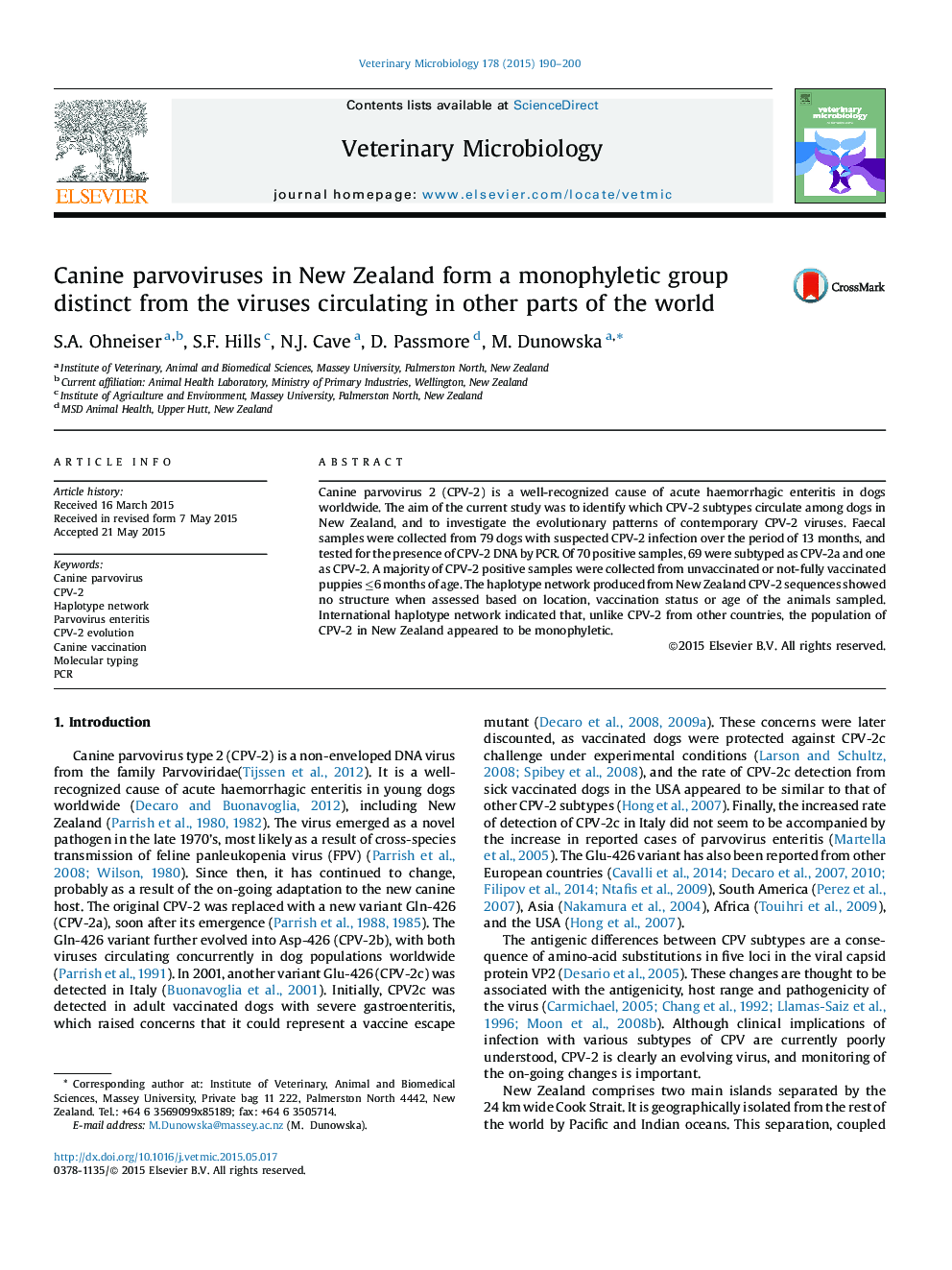| کد مقاله | کد نشریه | سال انتشار | مقاله انگلیسی | نسخه تمام متن |
|---|---|---|---|---|
| 5800023 | 1555348 | 2015 | 11 صفحه PDF | دانلود رایگان |
- CPV-2 was most common among unvaccinated or not fully vaccinated puppies.
- Of 70 positive samples, 69 were subtyped as CPV-2a and one as CPV-2.
- All contemporary New Zealand CPV-2 sequences appeared to be monophyletic.
- No clustering of local CPV-2 based on dog's age or vaccination status was evident.
- Our data support a singular, or infrequent, introduction of CPV-2 to New Zealand.
Canine parvovirus 2 (CPV-2) is a well-recognized cause of acute haemorrhagic enteritis in dogs worldwide. The aim of the current study was to identify which CPV-2 subtypes circulate among dogs in New Zealand, and to investigate the evolutionary patterns of contemporary CPV-2 viruses. Faecal samples were collected from 79 dogs with suspected CPV-2 infection over the period of 13 months, and tested for the presence of CPV-2 DNA by PCR. Of 70 positive samples, 69 were subtyped as CPV-2a and one as CPV-2. A majority of CPV-2 positive samples were collected from unvaccinated or not-fully vaccinated puppies â¤6 months of age. The haplotype network produced from New Zealand CPV-2 sequences showed no structure when assessed based on location, vaccination status or age of the animals sampled. International haplotype network indicated that, unlike CPV-2 from other countries, the population of CPV-2 in New Zealand appeared to be monophyletic.
Journal: Veterinary Microbiology - Volume 178, Issues 3â4, 5 August 2015, Pages 190-200
